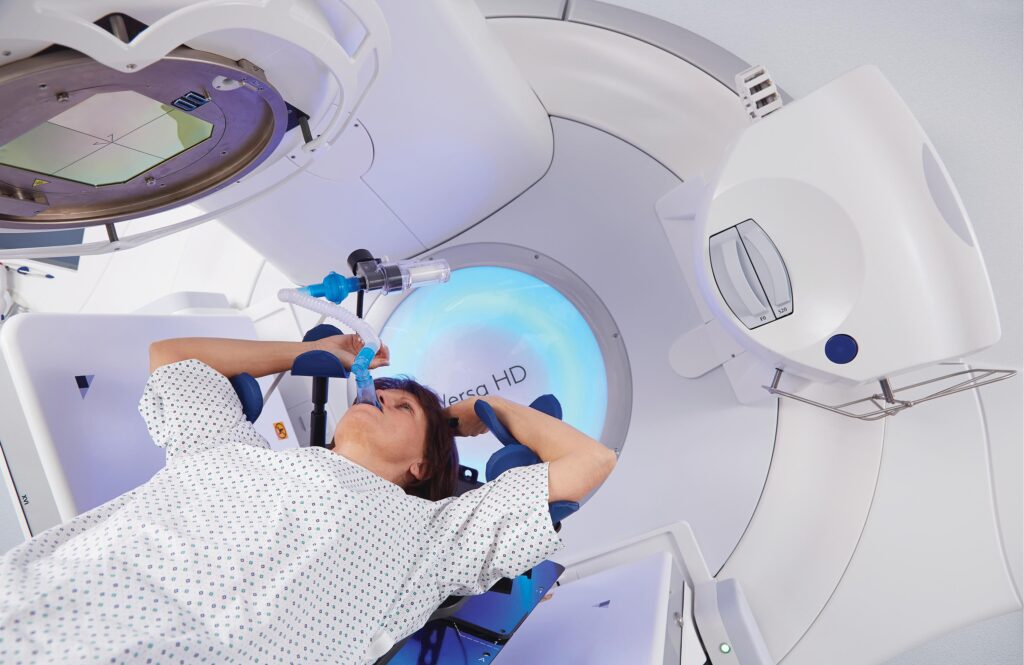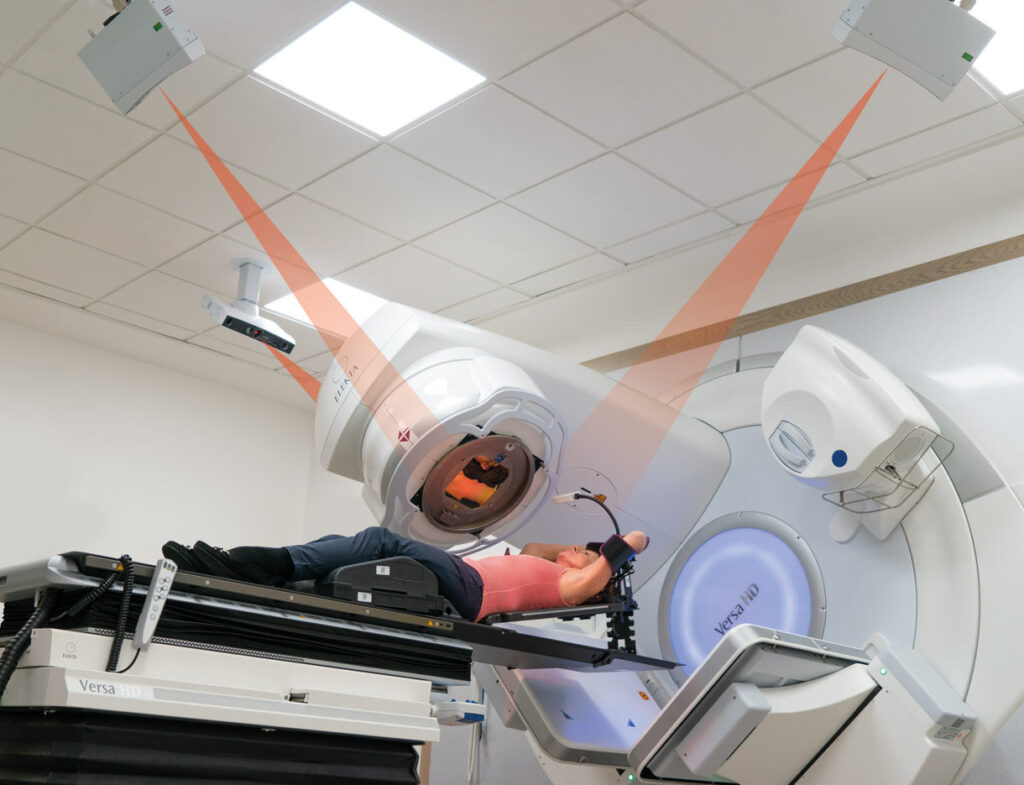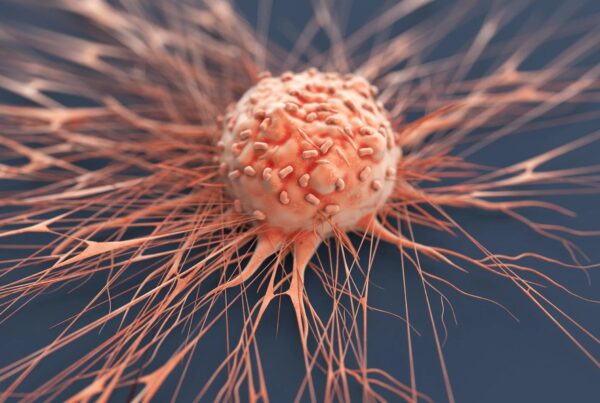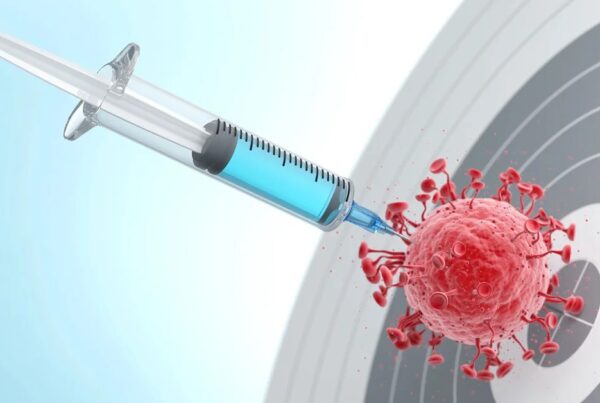Cancer remains one of the most significant health challenges facing humanity in the modern era, with scientific and medical minds racing to find innovative and effective solutions to combat it.
Among the arsenal of available treatment methods, radiation therapy stands out as a fundamental and effective pillar in dealing with this complex disease.
In fact, radiation therapy is one of the mainstays in cancer control, characterized by high precision and reliance on advanced techniques to target cancer cells without excessive harm to healthy tissues.
Since the discovery of X-rays in the late 19th century, radiation therapy has evolved into a precise and targeted tool, capable of targeting cancer cells with extreme accuracy while minimizing damage to surrounding healthy tissues.
It is no longer just a beam of radiation; it has become a science based on medical physics and radiobiology, supported by the latest imaging and computational technologies.
Here, it is important to highlight the experience of Liva Hospital in Turkey as a pioneering practical model for using this treatment to deal with various types of cancer.

Concept of Radiation Therapy
To understand radiation therapy, we must delve into its precise mechanisms that enable it to eliminate cancer cells.
Radiation therapy primarily relies on the use of high doses of ionizing radiation, such as X-rays, gamma rays, or particles like protons, which possess sufficient energy to cause ionization in the molecules of the material they pass through.
When targeting cancer cells, these radiations interact with water and other molecules within the cells to form free radicals, which are highly reactive chemical molecules.
These free radicals, in turn, cause damage to the DNA of cancer cells. DNA is the genetic blueprint that controls all cell functions, and its damage hinders the cancer cell’s ability to grow and divide effectively.
Cancer cells, unlike healthy cells, are often less capable of repairing this radiation damage, leading to their programmed death or cessation of division.
This selective property of radiation therapy is what makes it effective, as doctors can determine the appropriate dose that destroys cancer cells while allowing surrounding healthy cells to recover.
There are also different types of radiation; for example, proton therapy offers a more precise dose distribution, further reducing the exposure of healthy tissues to radiation.
These advanced techniques make a significant difference in treatment outcomes and reduce side effects for patients.
Types of Radiation Therapy
Radiation therapy is no longer limited to a single technique; it has evolved to include a wide range of methods, each specifically designed to suit different types and locations of cancer.
The two main types are external beam radiation therapy (EBRT) and internal radiation therapy (brachytherapy).
In external beam radiation therapy (EBRT), radiation beams are directed from a device outside the body towards the tumor. Advanced techniques in this field include:
- Image-Guided Radiation Therapy (IGRT): Uses imaging scans before and during treatment to precisely locate tumors and align the radiation beams.
- Intensity-Modulated Radiation Therapy (IMRT): Allows for adjustment of radiation intensity to conform to the shape of the tumor, delivering a higher dose to the tumor and a lower dose to surrounding healthy tissues.
- Stereotactic Radiation Therapy (SRT) / Stereotactic Body Radiation Therapy (SBRT): Delivers very high doses of radiation in a small number of sessions, targeting small, well-defined tumors with extreme precision.
As for internal radiation therapy (brachytherapy), it involves placing a radioactive source inside the body, either directly within or very close to the tumor.
This source can be temporary (with high or low doses) or permanent (such as radioactive seeds implanted in the prostate).
These different techniques allow doctors to customize treatment for each patient, increasing treatment effectiveness and reducing its side effects.
For example, at Liva Hospital in Turkey, the latest of these technologies are employed to ensure comprehensive and precise care for patients, reflecting a commitment to excellence in oncology.
Uses of Radiation Therapy
The role of radiation therapy is not limited to completely eradicating cancer; it extends to a wide range of therapeutic goals, making it a vital component in various cancer treatment strategies.
Firstly, radiation therapy is used as a curative treatment, where the goal is to completely eliminate the tumor, especially in early stages of cancer or when the tumor has not spread to other parts of the body.
Secondly, it can be used as an adjuvant therapy after surgery to remove any remaining cancer cells that may not be visible to the naked eye, thereby reducing the risk of cancer recurrence.
For example, it may be given after breast tumor removal to reduce the likelihood of recurrence.
Thirdly, radiation therapy is used as a neoadjuvant therapy before surgery to shrink the tumor size, making it easier to surgically remove completely or allowing for a less invasive surgery.
Fourthly, radiation therapy plays a crucial role in palliative care, where its aim is to alleviate painful symptoms caused by advanced cancer, such as pain from cancer spreading to bones, nerve compression, or tumor bleeding, significantly improving patients’ quality of life.
Fifthly, radiation therapy can be used to control tumor growth when a cure is not possible, thereby prolonging the patient’s life.
These diverse uses emphasize the flexibility of radiation therapy and its ability to adapt to the individual needs of each patient and cancer case.
Radiation Therapy Planning
The process of planning radiation therapy is a crucial stage no less important than the treatment itself, as it ensures that radiation is directed with extreme precision to cancer cells while protecting surrounding healthy tissues.
This process begins with a comprehensive assessment of the patient’s condition, including the type, stage, and location of the cancer, as well as the patient’s general health and medical history.
Next, detailed imaging of the target area is performed, often using Computed Tomography (CT Scan), and sometimes Magnetic Resonance Imaging (MRI) or Positron Emission Tomography (PET Scan), to determine the exact size and location of the tumor and surrounding sensitive tissues.
These images are used to create a three-dimensional model of the target area.
Then, the radiation oncologist, in collaboration with a medical physicist, defines the radiation fields—the areas that will receive radiation—and determines the appropriate radiation dose to be delivered to the tumor while maintaining a minimal dose to healthy tissues.
Advanced computer programs are used to simulate dose distribution, allowing the medical team to optimize the treatment plan.
This stage may also include the use of special immobilization devices to ensure the patient remains in the exact same position during each treatment session, increasing the accuracy of radiation delivery.
This precision in planning is what characterizes modern radiation therapy and contributes significantly to achieving the best treatment outcomes and reducing side effects.
Side Effects of Radiation Therapy and How to Manage Them
Despite the increasing precision of radiation therapy, it can cause some side effects, as surrounding healthy cells may be affected by the radiation.
The severity and type of side effects vary depending on the treated area, the total radiation dose, and the patient’s general health.
Common side effects that may appear during or shortly after treatment (acute side effects) include severe fatigue, skin irritation in the treated area that may appear as redness, dryness, or peeling, and hair loss in the radiation area.
Additionally, patients may experience nausea, vomiting, and diarrhea if the treated area includes the abdomen or pelvis, or sore throat and difficulty swallowing if the treated area includes the head and neck.
Side effects that may appear months or years after treatment (late side effects) are less common but can be more serious, including tissue fibrosis and changes in the function of organs exposed to radiation.
It is essential for patients to communicate effectively with their healthcare team to report any side effects they experience.
The doctor and radiation therapist can prescribe medications to alleviate symptoms and provide advice on skin care, nutrition, and rest to help the patient effectively manage these side effects.
Psychological support also plays an important role in alleviating the burden on the patient during this difficult phase.

Final Word
Radiation therapy has come a long way from its humble beginnings, becoming a cornerstone in the treatment of many types of cancer today.
Thanks to tremendous technological advancements and a deep understanding of cancer biology, radiation therapy has become more precise, effective, and safer than ever before.
From precisely targeting tumors to reducing side effects, science continues to offer innovative solutions that increase the chances of cure and improve patients’ quality of life.
With ongoing research and international collaboration, we look forward to a future where cancer is not seen as an end, but a turning point in the journey of science and medicine towards its eradication.
Liva Hospital in Turkey reflects a true advancement in providing this treatment, through advanced techniques, precise tools, and distinguished services. These opportunities allow you to achieve better treatment outcomes with a high-quality, humane experience.
Frequently Asked Questions
Is radiation therapy painful?
Typically, radiation therapy itself does not cause any pain during the session. Some patients may feel slight discomfort due to having to remain in a specific position for a short period, but the radiation itself is imperceptible.
How long does a single radiation therapy session take?
The duration of a single session varies depending on the type of radiation therapy and the treated area, but it is usually very short, ranging from 5 to 30 minutes.
Will I be radioactive after radiation therapy?
In most cases of external beam radiation therapy, the patient will not be radioactive after the session and can interact with others normally.
How long does a full course of radiation therapy take?
The duration of a radiation therapy course varies significantly depending on the type and stage of cancer and the treatment goal. It can range from a few sessions over a few days to several weeks, sometimes up to 6-8 weeks, with daily sessions five days a week.
Can I live my daily life normally during radiation therapy?
This depends on the side effects you experience. Many patients are able to continue most of their daily activities, such as work or study, with some adjustments.
Can radiation therapy be used for all types of cancer?
Radiation therapy is effective in treating many types of cancer, but it is not suitable for all cases. Its effectiveness depends on the type of cancer, its stage, its location, and its sensitivity to radiation.



